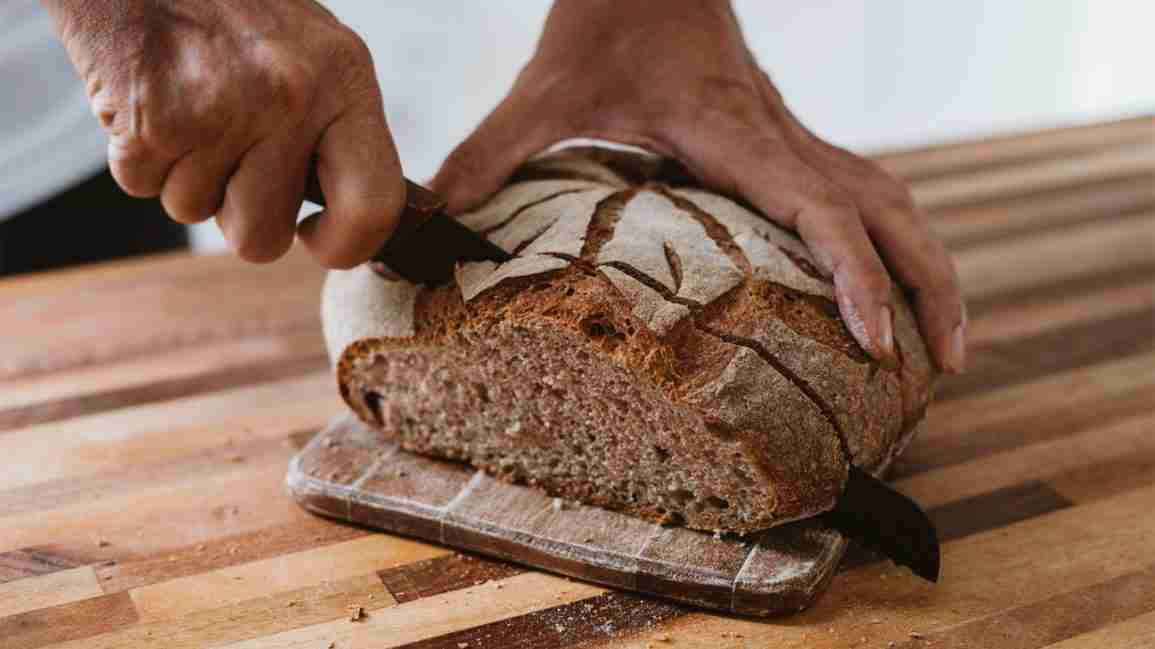
- A new study found “whole grain” labels on cereal, bread, and crackers can be confusing for people trying to make smarter food choices.
- To have a “whole grain” label, only 51 percent of a product has to contain whole grains.
- Experts found people often made the wrong decision about which product was healthier when looking at whole grain labeling.
Whole grains may be better for your health, but figuring out which products are healthier by relying on “whole grain” labels can actually make it difficult to make healthy choices.
A new study found that these labels on cereal, bread, and crackers can be confusing for people trying to make smarter food choices.
The report published in the journal Public Health Nutrition detailed a survey of 1,030 U.S. adults. The participants were shown photos of real and hypothetical products with food labels. They were asked to identify healthier options for the hypothetical products or assess the whole grain content of the real products.
A significant number of respondents had the wrong answer for which product was healthier.
“Our study results show that many consumers cannot correctly identify the amount of whole grains or select a healthier whole grain product,” Parke Wilde, PhD, study author and professor at the Tufts University, said in a statement.
The authors wanted to find out if there was a strong legal argument that whole grain labels are misleading. Evidence could back up a movement for increased labeling requirements.
“I would say when it comes to deceptive labels, ‘whole grain’ claims are among the worst,” added co-author Jennifer L. Pomeranz, an assistant professor of public health policy and management at New York University in New York City.
The labeling of whole grains has been “a source of confusion and deception for a long time,” said Dr. Amy Burkhart, an integrative medicine physician and registered dietitian based in Napa, California. “Many brands use the term whole grain and others to influence customer’s purchasing decisions by creating a ‘healthy product’ facade.”
The term “whole grain” means that all portions of the kernel are included in the product, Burkhart explained.
“The blurring of lines begins here,” she said. “The product only has to contain 51 percent whole grain ingredients to use the term ‘whole grains.’”
For example, a label can say “whole grain” but up to 49 percent of the product may include processed grains.
There are whole grains and refined grains, said Vicki Shanta Retelny, RDN, a consultant for Northwestern Memorial Hospital in Chicago. Whole grains contain three parts: the bran, germ, and endosperm layers. Refined grains have been stripped of the bran and the germ layers and, in turn, are devoid of fiber, iron, B-vitamins, fatty acids, and antioxidants, which are inherent in the whole intact grain.
Refined grains are white flour products that may be enriched or fortified with vitamins and minerals to provide nutritional value.
Whole grains that are wheat-based contain gluten. Wheat-free grains are typically gluten-free unless there is cross-contamination during processing of the grain, Retelny said.
According to the U.S. Department of Health and Human Services and the U.S. Department of Agriculture’s
The most common types of whole grains that contain gluten include wheat, barley, rye, and spelt. Gluten-free whole grains include corn, oats, brown rice, quinoa, buckwheat, brown rice, sorghum, teff, millet, and amaranth, Burkhart said.
Ancient grains such as farro and spelt are those that have not been changed by modern breeding methods over the last several hundred years. Nonwheat ancient whole grains include sorghum, quinoa, and millet, she noted.
“This doesn’t mean they are necessarily more nutritious but they do require a lower amount of pesticides and water to be grown which is beneficial to the planet,” Burkhart said.
As part of the survey, the packages on the hypothetical products either had no front-of-package whole grain label or were marked with “multigrain,” “made with whole grains,” or a whole grain stamp. The packages on the real products displayed the actual product markings, including “multigrain,” “honey wheat,” and “12 grain.”
When looking at the hypothetical products, people had to answer if they thought the product was healthier. For the real products, they were asked to assess the whole grain content.
Of the hypothetical products, 29 percent to 47 percent incorrectly identified the healthier item. Specifically, they had the wrong answer 31 percent of the time for cereal, up to 37 percent for crackers, and 47 percent for bread items.
Of the real products that were not mostly composed of whole grains, 43 to 51 percent of respondents overstated the whole grain content depending on the products.
Researchers found 41 percent overstated the grain content for multigrain crackers, 43 percent for honey wheat bread, and 51 percent for 12-grain bread.
However, respondents more accurately identified the whole grain content of an oat cereal that mostly included whole grain.
While experts find the labeling standards by the Food and Drug Administration confusing, other groups have pushed for more transparency.
The Whole Grains Council, a nonprofit consumer advocacy group, has created three stamps to guide consumers but they are not on all products.
Companies must apply to use the stamp. The 100 percent stamp includes products where all grains are whole grain and the product contains at least 16 grams of whole grain per serving. The 50 percent stamp means that 50 percent or more of the grains in the product are whole and the product contains at least 8g of whole grain per serving. The basic stamp means the item contains at least 8 grams of whole grain per serving, Burkhart explained.
Terms such as wheat, semolina, durum wheat, organic flour, stoneground, multigrain, fiber, and cracked wheat may or may not be whole grains.
“When you’re buying a whole grain product, such as bread or crackers, look for the first ingredient to be a whole grain ingredient such as whole grain flour or whole wheat flour,” said Amy Gorin, MS, a registered dietitian nutritionist in New Jersey. “Many whole grain products are made with whole grains but don’t contain them as a primary ingredient.”
On bread labels, for example, the first ingredient should be whole grain flour, whole wheat flour, or another whole grain ingredient. It should not, for example, be enriched wheat flour.
“The fiber content on the nutrition label is another giveaway — whole grain products are likely to be good or excellent sources of fiber,” Gorin said.
Retelny advises her clients to focus on the ingredients list of a product for the word “whole” before the grain. For example, look for “whole wheat” or “whole oats” instead of “enriched” wheat or oats, because those are refined versions of the grain, she said.
“Just because it’s a brown bread doesn’t mean it’s whole grain,” Gorin said.




